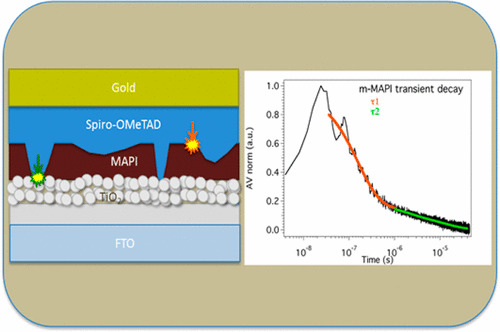In this work, we analyze the carrier recombination kinetics and the associated charge carrier density in methylammonium lead iodide perovskite (MAPI) solar cells that use mesoporous TiO2 as selective contact (m-MAPI) and flat solar cells (without the mesoporous TiO2, f-MAPI), which are the most common device architectures for perovskite solar cells. The use of PIT-PV (photoinduced transient photovoltage) and L-TAS (laser transient absorption spectroscopy) showed that for devices that cannot reach efficiencies close to 19% there is a slow component of the photovoltage decay that corresponds to a charge recombination pathway for carrier losses responsible for the lower device efficiency. Moreover, we have also identified a primary interfacial charge recombination pathway for carrier losses that is common in all devices studied, independent of their efficiency or their device structure, which we have associated with the recombination reaction between electrons in the perovskite and holes in the organic semiconductor material used as the selective contact.
